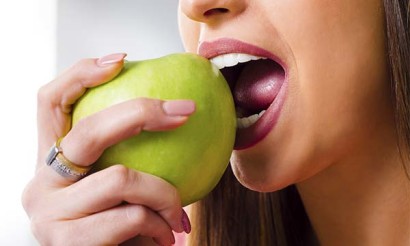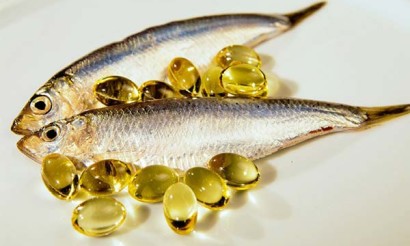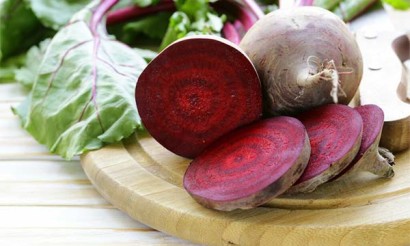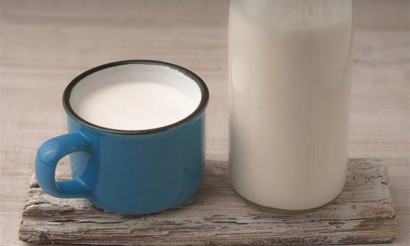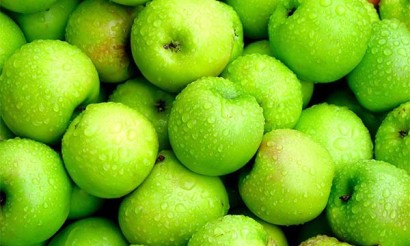Ice cream when breastfeeding: benefits and harms
- Is it possible to eat ice cream when breastfeeding
- In the first month
- The second month
- In the third month
- How to eat ice cream correctly
- How much can I eat per day?
- Can I Eat Ice Cream at Night and on an empty stomach?
- The benefits of ice cream when breastfeeding
- What are the dangers of ice cream during lactation?
- What is the right way to introduce ice cream to a breastfeeding mother's diet?
- How to choose a real ice cream
- Recipe for homemade ice cream
- Ice cream with goat milk
- Creamy Ice Cream
- Ice cream with bananas
- Classic Ice Cream
The dietary restrictions that a woman is forced to follow during pregnancy, so as not to harm the future baby's health, do not end after the baby is born. While the mother is breastfeeding, she also has to make a clear distinction: what products will benefit the baby, and so they can be eaten, keeping the rules of a balanced diet, and which are not suitable for use in this period because of the danger to the baby.
But sometimes you just want to pamper yourself with something tasty! Ice cream is often on the list of foods that are desirable for breastfeeding mothers. And she sometimes gets in a dilemma: can I eat a bag of ice cream or not?
Can I eat ice cream when breastfeeding?
Some people think that ice cream is a dairy product, not much different from ryazhenka or, for example, yogurt - if only sweeter. So a breastfeeding mother may be convinced that this treat is absolutely safe for the baby. But everything is not so unambiguous.
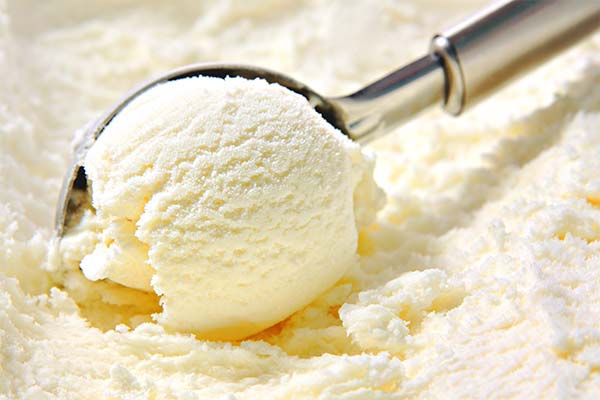
Of course, a mother during the breastfeeding period should follow a diet and use only products that are safe for the baby. After all, his still weak gastrointestinal tract has to adapt to the diet, learn to adapt to the different components of breast milk.
If the ice cream is natural, a breastfeeding woman can have it - but with the condition that it is gradually introduced into the menu. It will help to cool down in the heat and will not harm the baby. Especially useful to eat a little treat for those who are prone to postpartum depression: it's great to lift your spirits.
The best thing is not to run to the store for ice cream, and make it yourself at home. This is a guarantee that the baby's health will be okay.
In the first month
Immediately after birth, the dietary requirements for nursing mothers are the most stringent. From difficult to digest or allergenic products is better to give up.
Ice cream can make breast milk too fatty, making the baby will have colic, tummy troubles, stool changes. Therefore, in the first month of life of a baby cooling sweet dessert breastfeeding mother is forbidden.
In the second month.
From the second month of life of the infant, closer to its end and the beginning of the third month, you can allow the first reception of ice cream. At first it is allowed only to try - to eat just a teaspoon, and with the lowest fat content - no more than 3.5%. Ice cream should be made at home, from products that do not cause allergies in the baby.
Goat milk can be used, but it is best to make a treat without milk at all for the first use - like "fruit ice", and take hypoallergenic fruits or berries as the basis - yellow apples or pears, white cherries and currants, blueberries. The amount of ice cream consumed by the mother is also important - in the second month of the baby's life, it is not recommended to eat more than two teaspoons of the dessert more than a couple of times a week.
Supermarket ice cream is not suitable at this stage of the baby's life, and is only allowed at the beginning of the fourth month. Among the ready-made, manufactured in the industrial way, you have to choose the dairy variety.
In the third month
And in the third month of the baby's life is still not allowed to consume any ice cream, which the nursing mother wants. It is necessary to exclude treats with additives in the form of nuts or fruit fillers and eat only pure white product. The only indulgence is crème brûlée. Because it is based on regular sugar caramel, it is possible closer to the end of the third month of the baby's life to try to introduce crème brûlée into the diet. If the child has no negative reaction to the treat is allowed to eat it, along with white, but in limited quantities.
How to Eat Ice Cream Properly
In order for ice cream not to bring harm to both the mother and the baby, it is necessary to adhere to some rules when consuming it. This means - do not eat uncontrollably, clearly comply with the recommended amount.
How much can be eaten per day
If a mother buys ice cream in the store, and not cooks it at home herself, then she at first allowed only pure white - the famous ice cream, as well as cream and dairy. And, determining the amount allowed for consumption during the day, guided by the fat content of the product. For example, if a dairy product with a fat content of 3.5-4% is allowed to eat up to 70 grams, the rate of 10 or even 20% fat dainty should be reduced by half, or even more, not allowing its consumption over 30 grams.
Can I Eat at Night and on an empty stomach?
Breastfeeding mothers are recommended to eat ice cream in the first half of the day, as it increases the fat content of breast milk, which increases the load on the digestive tract of the baby. If mom eats a dainty before going to bed, the baby will have to digest heavy food all night, and such hard work at night is not good for the fragile body.
In addition, the gastrointestinal tract of the mother will not be happy: because the product is cold, it will affect the blood vessels, which inevitably will narrow, resulting in slower blood circulation and digestion. Therefore, the ice cream will inevitably begin to be deposited in the sides in the form of fat deposits and excess weight.
Eaten early in the morning, on an empty stomach, a small amount of a treat will help mom wake up, improve mood, reduce mental irritation and increase brain activity. The only condition is that the treat should not be straight from the freezer. If it turns out to be too cold, the not yet fully awake body will have to spend a lot of energy to melt it. Therefore, it is better to keep the ice cream at room temperature and then eat it; in this case it will be useful.
The benefits of ice cream when breastfeeding
Ice cream is not just a tasty sweet product, it contains a complex of vitamins and a set of minerals, useful for both adults and children. These are mainly components that come into the treat from milk.

The vitamin component is represented by vitamins A, D, E, PP, as well as the B group.
- Vitamin A is essential not only for the mother, but also for the baby, because it is necessary for healthy bones and good vision, improved immunity and normal hair and skin. Thanks to him, babies have healthy teeth, actively growing new cells, and with them - and the child itself. This substance is a participant in metabolic processes, can accelerate the healing of wounds and slow down the aging of the body. In addition, a well-known positive effect of vitamin A on human sexual activity - both men and women.
- Vitamin D for infants - one of the most important substances: when it is not enough, a child is at risk of developing rickets - a disease that is very difficult to treat. Therefore, to prevent children under a year old give vitamin D in the form of pharmacy preparations, in ice cream it is contained in natural form. It helps ensure that the body absorbs phosphorus and calcium normally. It is useful for mothers because it stimulates the speedy recovery of the menstrual cycle after childbirth, normalizes blood clotting, and also helps to tidy up the nerves.
- Another component of ice cream is vitamin E (its other name is tocopherol). This is the best means of protection against free radicals that enter the human body from the outside, for example, together with cigarette smoke, exhaust fumes, radiation, household chemicals and other harmful compounds, which can cause irreparable harm, up to the destruction of DNA. Obviously, this vitamin is essential for both mom and baby.
- Vitamin PP (its other name is nicotinic acid) can support the body even in minimal doses and prevent the development of atherosclerosis, improve blood flow and normalize the amount of sugar in it. Thanks to him, the body of the mother and child are more likely to be cleared of harmful or toxic substances, improve its ability to resist inflammation. In addition, nicotinic acid normalizes the gastrointestinal tract, improves mental and physical performance.
- Also contained in the ice cream B vitamins are important for metabolism. Each of them has a lot of advantages, in particular they contribute to the normalization of the functioning of blood vessels, heart and intestines, increase the body's immune system and its ability to resist infections. Sufficient intake of B vitamins helps the nervous system, eliminates depression, and makes it easier for the mother of the baby to cope with high stress - both physical and emotional. For the baby, these substances are useful in that they stimulate cell growth, are actively involved in the development of the muscular system.
Minerals are represented in ice cream by potassium, calcium, magnesium and iron.
- Potassium has a direct impact on the activity of the main, most important organs of the mother - heart, kidneys, ensuring their clear and uninterrupted operation, stimulates processes in the body aimed at oxygenation of the brain. On it depends more productive reduction of edema, qualitative release of toxins.
- Calcium is essential not only for the mother, but also for the baby, because it is extremely useful for children to form teeth, bones, activation of nerve impulses responsible for muscle contraction. The role of calcium in normalizing blood pressure, lowering blood cholesterol levels and preventing atherosclerosis is also great. This substance also stimulates the work of the organs of internal secretion, which, in turn, "spurs" the activity of digestion.
- Magnesium, which is also a component of ice cream, is not much required by the mother's body, but it is during the period of breastfeeding that its reserves are depleted, so it is necessary to replenish them. The magnesium contained in the ice cream will help to resist the stress and postpartum depression, control the normal blood sugar level and prevent the destruction of the tooth and bone tissues.
- Iron, being a part of hemoglobin, is responsible for oxygen delivery to organs and tissues, ensuring efficiency of respiratory process, regulates metabolic processes and helps immunity to cope with bacteria, viruses and other hostile microorganisms. In addition, iron helps a nursing mom and baby maintain a good appetite and vitality.
Ice cream is also a valuable source of a large complex of amino acids - leucine, tryptophan, lysine, valine and others. They actually ensure the continuity of the entire systems of the mother's body, and their benefits are passed on to the baby with the breast milk. As a result, the immune system functions optimally, muscle and connective tissues are formed, blood glucose concentration is regulated, and adrenaline, enzymes, hormones, phospholipids, serotonin and other substances necessary to sustain life are synthesized.
In addition, ice cream is nutritious because it is high in protein and rich in easily digestible animal fats and carbohydrates.
The amino acids contained in the ice cream are able to improve the condition and structure of the liver, activate the brain, digestive system and thyroid gland.
Due to the presence of these useful components, the ice cream is a real source of the joy hormone, which will help a nursing mother to raise her mood, overcome stress and depression. Pediatricians say that a calm, balanced and joyful woman increases the quantity of breast milk, and that the fats contained in ice cream can improve its quality.
For a nursing woman and her baby, ice cream is equally beneficial in its ability to boost the body's immune system, strengthen teeth and bones, speed up metabolism, and help the heart, nervous system and gastrointestinal tract to function properly. For the mother, in addition, eaten ice cream will help to establish sleep and eliminate insomnia, will give strength and energy in this difficult period of her life. The product will help to restore the skin, hair and nails, which were depleted during pregnancy and have lost their former attractiveness, and more quickly establish the menstrual cycle.
In addition, a number of ENT doctors recommend ice cream as a means of preventing angina, pharyngitis or tonsillitis, because it is able to harden the throat and make it less susceptible to low temperatures.
What are the dangers of ice cream during lactation?
And yet such a useful product as ice cream has properties that make it useful not for everyone. For example, due to the fact that this treat is sweet and caloric, the figure of a nursing mother can suffer, especially if she is prone to obesity. And if she is also diagnosed with diabetes - she is not allowed to eat ice cream at all, with the exception of varieties, where sugar substitutes are used to give sweetness to the product. In addition, the high sugar content may damage the teeth of a woman who eats ice cream frequently and in large quantities.

Packaging cold treats, which are sold in stores, breastfeeding woman should study very carefully. Today it is very difficult to find an all-natural product. Manufacturers stuff it with preservatives, emulsifiers, stabilizers, and other additives that can harm not only the baby, but also the mother herself. For the sake of economy, synthetic substitutes are used instead of natural fats, or, for example, natural milk fat is replaced with vegetable fat, such as palm oil or refractory confectionary fat, which is classified as trans fats. They don't digest completely and get deposited in the body, which can cause atherosclerosis and even neoplasms.
Another fairly common substitution is when manufacturers use a reconstituted product from powdered milk instead of whole milk. It may not be harmful, but it's not useful either.
In addition, there is a high probability that the ice cream will cause allergies in the infant. One of the allergens is cow protein, or milk protein, from which babies quite often develop negative reactions. The large amount of sugar in the treats complicates the situation, increasing the risk of allergic reactions. Colored ice cream, as a rule, contains dyes, either synthetic or natural, but even these, regardless of their origin, can cause allergies in the baby. Therefore, chocolate or fruit ice cream is prohibited for breastfeeding mothers.
Milk protein, in addition to allergies, often causes lactase deficiency in children - so called individual intolerance of this component, which is expressed by disorders of the gastrointestinal tract: bloating and stool disorders. The reason is that the body does not absorb dairy products. If the baby has similar symptoms after mom ate ice cream, you need to show him to a specialist for consultation - perhaps the child is suffering from lactose intolerance.
In addition, the dairy fats from ice cream in the breast milk increases its fat content, and this is fraught with upset tummy of the baby, anxiety. That is why for the use of breastfeeding women it is better to choose not the most fatty varieties of dessert. Thus, it is better to refuse from the creamy ice cream and replace it with dairy ice cream.
What is the right way to introduce ice cream into the diet of a nursing mother?
So, in the first month of the baby's life, a nursing mother should not eat ice cream. In the second month, and it is better from the second half of it, you can try the dainty treat little by little. You can start with milk ice cream, which contains about 3.5% of fat, but cream or ice cream is too fatty.
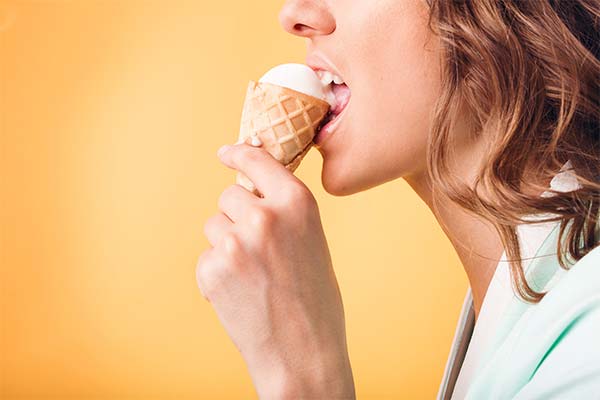
The first "acquaintance" of the baby with ice cream should be very limited: the mother is allowed to eat two teaspoons of the treat no more than twice a week. If the baby is not allergic, and his tummy perceived the sweet product is normal, with no negative reactions, you can gradually accurately increase the rate over time, bringing it to a couple of small (70-gram) packs per week. You should not eat the entire packet at once, but divide it into two or three portions and eat it during the day, before feedings.
Do not forget about the rules, which are introduced into the menu of a nursing mother's new products. The first time you try ice cream should be before the morning feeding the baby, so it was possible then throughout the day to closely monitor what reaction of his body will follow. If he will have colic, bloating, loose stools, rashes, fever, the baby will be worried and cry - it is better not to eat ice cream. If the baby's body has accepted the ice cream that she has eaten in a friendly way and has not reacted negatively, the portion can be gradually increased over several days.
It is important that the mother did not consume other new, unfamiliar products on the same day as the ice cream, otherwise it will be difficult to determine what caused the allergy or, for example, bloating and colic.
You can begin to eat ice cream only with a pure white product, without additives. The only exception is crème brûlée. It is made on a caramel base, which is not forbidden to a nursing mother. Therefore, it can be eaten in the third month of life of a baby, as a rule, it is perceived by the body of the baby calmly, without negative reactions. Chocolate, pistachio, strawberry ice cream is better not to eat until the baby is six months old, because nuts, chocolate and strawberries are very strong allergens. And it is better not to try such a treat at all, while the baby is breastfeeding.
How to choose a real ice cream
Buying ice cream in the store, you should carefully read everything that is written on the label. The first thing to pay attention to is the expiration date. The quality product can't have expiration date more than three months. The longer the product can be stored, the more preservatives it contains.
Ready-made fruit ice cream is better not to take, as those types that are made in industrial conditions, contain flavorings and dyes. Chocolate is also better left on the store counter: the caffeine it contains has a bad effect on the baby - he starts to be cranky, sleep badly.
Therefore, it is better to choose a white product, more than others, free from preservatives, flavors and other chemical ingredients.
Recipe for homemade ice cream
Homemade ice cream is a natural product, without preservatives and chemical additives. Therefore, it is suitable for consumption by a nursing mother as early as the second month of the baby's life.

Ice cream with goat's milk
To get delicious, healthy and safe homemade ice cream, it is necessary to cook it on goat's milk, which is much healthier than cow's milk. But what is especially important for breastfeeding mothers - it is hypoallergenic, which means it will not provoke a rash in the baby.
You will need three yolks per liter of milk, and it is better if they are not store eggs, but eggs laid by domestic chickens. Thoroughly mix the yolks with 150 grams of granulated sugar and 10 grams of vanilla sugar, add to the mixture a tablespoon of flour, stir again just as thoroughly to prevent the formation of lumps, and dilute the resulting mixture with a little milk.
Warm the main part of the milk until warm, carefully add the sweet egg and flour mixture and stir it thoroughly to obtain a homogeneous mixture, which should be heated over low heat while stirring continuously until it thickens.
The ice cream mass is ready! You can chill it in an ice cream maker, or you can put it in the freezer and whisk it every half hour. When the ice cream has finally cooled, it can be consumed.
Creamy Ice Cream
Take 500g of cream and add 100 ml of milk, 5 egg yolks, 150g of granulated sugar and a teaspoon of starch.
Heat the milk in a saucepan until warm and dissolve the sugar in it. Remove from heat and, whisking constantly, add the yolks, then return the resulting mass back on the stove. Dilute the starch with a little milk, pour it into the basic mixture, stir it, and, taking the pan off the fire, put it in a bowl with cold water. Add the cream, whipped into a steady foam, and stir gently to prevent it from settling.
Refrigerate the resulting mass either in an ice cream maker or in the freezer, hand whipping every half hour or 40 minutes until the product is fully cooked.
Ice Cream with Bananas
Crush 3-4 bananas with a fork, pour into the resulting puree and a half cup of milk and cream, pour 100 grams of sugar, stir the mass and put it to boil on low heat. Do not bring it to the boil, so that the mixture does not curdle.
Take the pan with the mass for ice cream off the fire, and leave for about 40-50 minutes, to infuse. Once it has cooled a little, portion it out into small silicone molds, put a wooden stick in each mold, and place it in the freezer. Refrigerate until ready ice cream for at least three hours.
Classic ice cream
Mix 90 g of granulated sugar, 10 g of vanilla sugar and 35 g of powdered milk, then dilute them with 200 ml of normal pasteurized milk. Place the mixture on the stove and with constant stirring bring it to the boil.
In another bowl, mix 100 ml of milk with 10 g of starch, pour it into the boiling base mass, cook until it begins to thicken, and place it in a bowl with cold water to cool.
Meanwhile, whip 250 ml of cold cream (at least 30% fat). Whisk until no peaks are formed in the mass.
Mix the whipped cream with the cooled basic mass and put it in the freezer. The finished ice cream will harden for about 6 hours, but during this time it should be whipped every half hour to keep it from crystallizing.
«Important: All information on this site is provided for informational purposes only. purposes only. Before applying any recommendations, consult a health care professional. specialist. Neither the editors nor the authors shall be liable for any possible harm caused by materials."




